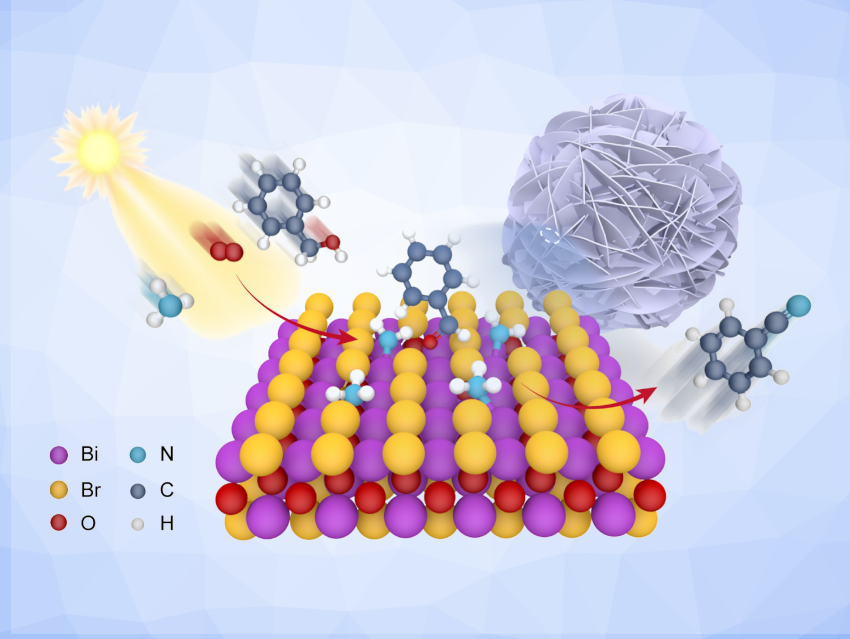Photocatalytic organic reactions can be useful to achieve challenging functionalizations under mild conditions. Heterogeneous photocatalysts with good performance are available for different transformations, but the synthesis of organonitrogen compounds using ammonia has received comparatively little attention and remains challenging.
Ammoxidations, reactions for the production of nitriles using ammonia and oxygen, for example, are challenging because they involve the adsorption and activation of multiple substrates, which requires suitable photocatalysts. The introduction of surface defects can be an effective strategy for designing heterogeneous photocatalysts for a particular application.
Xing Cao, Tsinghua University, Beijing, China, and Westlake University, Hangzhou, China, Qing Peng, Tsinghua University, Yadong Li, Tsinghua University, Anhui Normal University, Wuhu, China, and Beijing Normal University, China, and colleagues have synthesized BiOBr nanosheets with different types of vacancies to be used for the photocatalytic synthesis of benzonitriles via the ammoxidation of benzyl alcohols (pictured). The team prepared a series of BiOBr nanosheets rich in surface defects by varying the surfactant concentration in a solvothermal synthesis process.
The researchers found that BiOBr samples with Br–Bi–Br triple atom vacancy associates and oxygen vacancies produce benzonitrile with high selectivity with yields up to 92 %. They propose that nanosheets with these vacancy associates can effectively adsorb and activate O2 and NH3, promoting the formation of an imine intermediate, which is then oxidized by superoxide radicals to the desired nitrile
- Photosynthesis of Benzonitriles on BiOBr Nanosheets Promoted by Vacancy Associates,
Tong Han, Xing Cao, Hsiao-Chien Chen, Junguo Ma, Yuan Yu, Yuhuan Li, Wei Xu, Kaian Sun, Aijian Huang, Zheng Chen, Chen Chen, Hongjun Zhang, Bangjiao Ye, Qing Peng, Yadong Li,
Angew. Chem. Int. Ed. 2023.
https://doi.org/10.1002/anie.202313325




